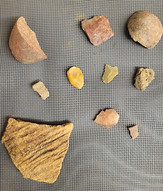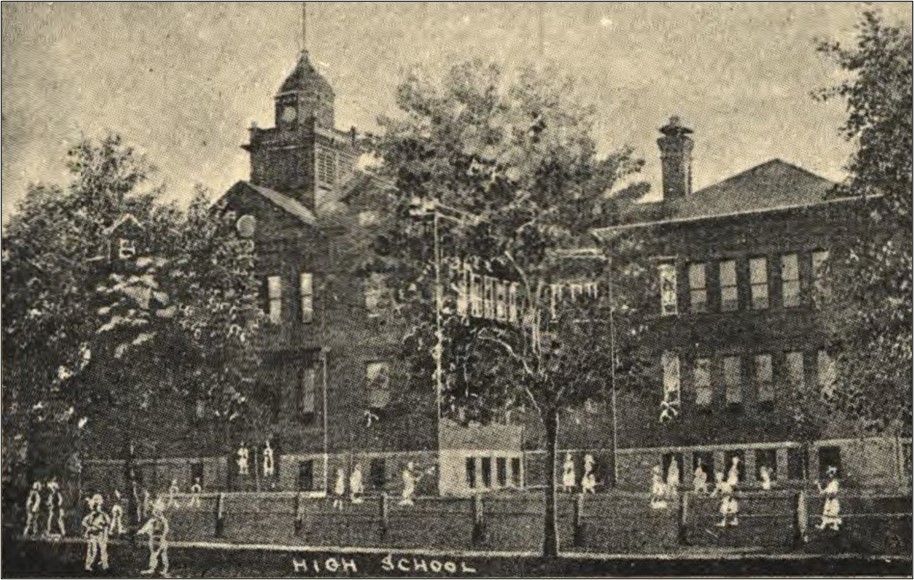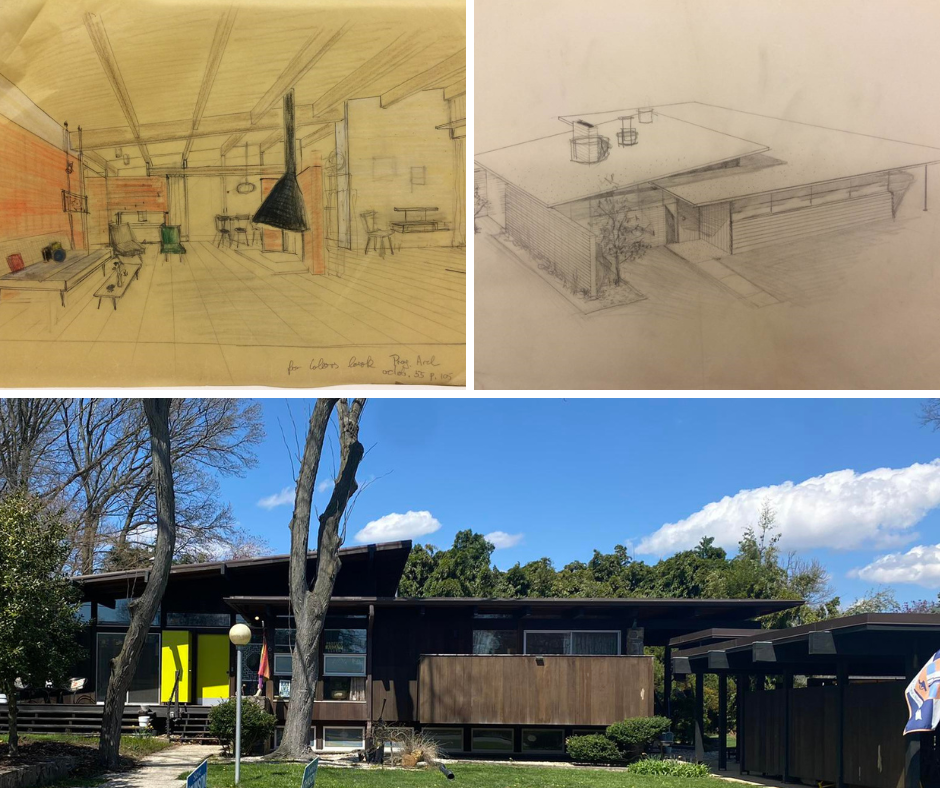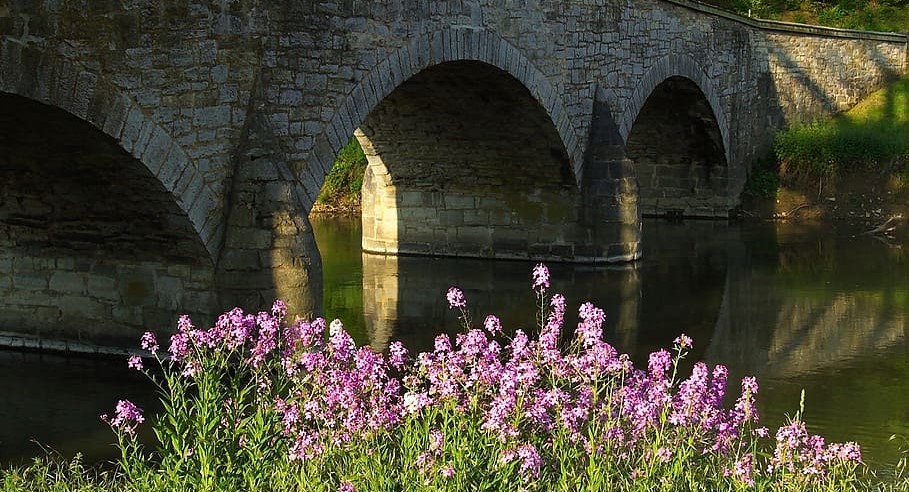
2024-2031 Planning is Underway...
MHT is seeking feedback to help inform the 2024-2031 update to the statewide preservation plan, which will guide historic preservation, archaeology, and cultural heritage activities around the state. You can participate by completing this survey and joining one of our public meetings this summer! Meeting times and locations will be announced by email and posted on the preservation plan page and Facebook when scheduled.
|

Annual Archaeology Field Session
The 2023 Tyler Bastian Field Session in Maryland Archeology will be held from May 19th to May 29th at the Pre-Colonial American Indian site of Chapel Branch West Site near Denton (Caroline County). This Field Session will investigate the buried living surface discovered at last year's Field Session to document the American Indian occupations and hopefully reveal intact cultural features including house patterns, hearths, and storage pits. Click HERE for more information or to register online with the Archeological Society of Maryland who handles all Field Session registration. Please contact the ASM with registration questions.
As in years past, primitive camping will be offered for those interested in staying over. For details and to reserve your camping spot, contact Research Archaeologist Stephanie Soder at Stephanie.Soder@maryland.gov or 410-697-9552.
|
By Jessica French (Evaluation and Registration Administrator) and Grace Davenport (National Register Assistant Administrator)
In FY21, the Baltimore Architecture Foundation was awarded a Historic Preservation Non-Capital Program grant to develop a historic context and National Register of Historical Places Multiple Property Submission (MPS) for woman architects in Maryland based on research done by Jillian Storms, AIA. This research went on to become an exhibit called, “Early Women of Architecture in Maryland.” The MPS, written by EHT Traceries, examines the careers of woman designers, including architects, landscape architects, and artists in Maryland that were active between 1920-1970. Divided into two periods, before and after World War II, the form outlines the achievements of several woman architects within the broader national context for women’s rights and the historic changes of the perceptions of women in the workforce and identifies property types and registration requirements for listing properties associated with women architects to the National Register.
 |
Havre de Grace High School, designed by Anna L. Hawkins in 1896. From Bird's Eye View of Havre de Grace (1907).
There were many pioneering women architects who practiced throughout the nation in the late nineteenth and early twentieth centuries, such as Anna L. Hawkins—the earliest documented woman architect in Maryland and the first woman to graduate from the Maryland Institute of Art and Design’s architecture program. The period from 1920 to 1945 was a time of great change for Maryland and provided new opportunities for these women practicing architecture. As a distinction grew between architects and builders, the field of architecture became more formalized with requirements that architects be licensed, with Maryland formalizing their registration process in 1935. Prior to World War II, there was no accredited, university-level architecture school in Maryland, so those interested in pursuing architecture needed to gain either a formal education outside of the state, or gain experience through an apprenticeship. Most of the female architects who practiced in Maryland during this period were not originally from the state and received their education elsewhere. This period saw both a growing interest in the restoration and rehabilitation of historic properties and estates, and an expansion of the suburbs to meet the housing needs of the increased federal workforce. The increase in development demands provided new opportunities for women in this period. Seven notable women designers actively worked in Maryland during this period: Gertrude Sawyer, AIA (1895-1996), Rose Ishbel Greely (1887-1969), Victorine Du Pont Homsey, AIA (1900-1998), Katherine Cutler Ficken, AIA (1892-1961), Hildreth Meière (1892-1961), Perna Krick (1909-1991), and Mary Frances Knee, AIA (1897-1977).
The period after World War II to 1970 saw an increase in married women in the workforce, including in the design professions. In this period, the AIA Baltimore Chapter lifted its membership restrictions and opened to women. Educational opportunities for women expanded during this time as well. The University of Maryland School of Architecture was established in 1967, became accredited in 1971, and was open to both male and female students. Notably, it was the first professional architecture program in the state. A post-war housing and construction boom in Maryland provided more opportunities for women architects. This period also saw an evolution of aesthetic trends and directions, including architectural modernism. The Women’s Liberation Movement of the 1970s advocated for a more equitable career landscape and impacted more women entering the architectural field, although in 1974, women only comprised 1.2% of registered architects nationwide. There were ten women designers who were actively working in Maryland during 1945-1970: Nezahat Arikoğlu (1920-2000), Mary Jack Craigo (1921-2001), Katherine Gibbs, AIA (1907-1991), Poldi Hirsch, AIA (1926-1987), Shirley Kerr Kennard, AIA (1929-2016), Iva Lieurance (1886-1956), Melita Rodeck (1914-2011), Chloethiel Woodard Smith, AIA (1910-1992), Helen Ross Staley, AIA (1921- ), and Ida Brown Webster, AIA (1899-1993).
 |
Concept Sketches of Hirsch Residence by Poldi Hirsch (Credit: Hirsch Family); Hirsch Family Home from National Register Nomination
The Poldi Hirsch Residence (c. 1969), located at 605 Giles Street in Havre de Grace, Maryland, was the first property listed on the National Register of Historic Places under the MPS. Poldi Hirsch, AIA (1926-1987) was born in Remscheid, Germany in 1926 and later moved with her family to Israel where she gained an education at the Hebrew Technical College in Haifa. In 1953, Hirsch moved to the United States with her husband and daughter, ultimately settling in Havre de Grace. Earning her architect’s license in 1962 and finding it difficult to find architectural commissions, Hirsch undertook the financing, design, and construction of numerous projects herself. Poldi Hirsch designed the house at 605 Giles Street, planning it according to the needs of her family. Local builder Carl Thomas constructed the house, completing it in 1970. The home consists of an L-shaped plan with low, horizontal, modernist massing, and is clad in California redwood siding. The single-paned, wood-framed windows are original. The house exhibits Hirsch’s vernacular expression of modernism that merged technology with tradition and craft in its use of natural materials, strong geometrics, and interior to exterior connections. The Hirsch Residence is regarded as Poldi Hirsch’s best surviving work.
Recently awarded with a Historic Preservation Non-Capital Program grant, the Baltimore Architects Foundation can now move forward with Phase 2 of this project: four new nominations for sites associated with woman architects are on the way!
HP Capital Grant Deadline Extension
We’re excited to announce an extension to the deadline for the Historic Preservation Capital Grant Program!
You will now have until May 1, 2023, to submit your applications for the FY23 round, which still has $600,000 available for projects that promote the acquisition, restoration, and rehabilitation of historic properties across the state of Maryland. Visit the program web page for more information.
|
|
 |

Follow Us on Social Media!
There are many ways you can learn more about MHT, its programs, and the work it does. The latest news is updated regularly on our website. You can "like" and "follow" us on Facebook and Instagram, or sign up for our e-blasts to have our quarterly newsletters and other preservation news delivered straight to your inbox!
|

OUR HISTORY, OUR HERITAGE: BLOG ROUND-UP
|